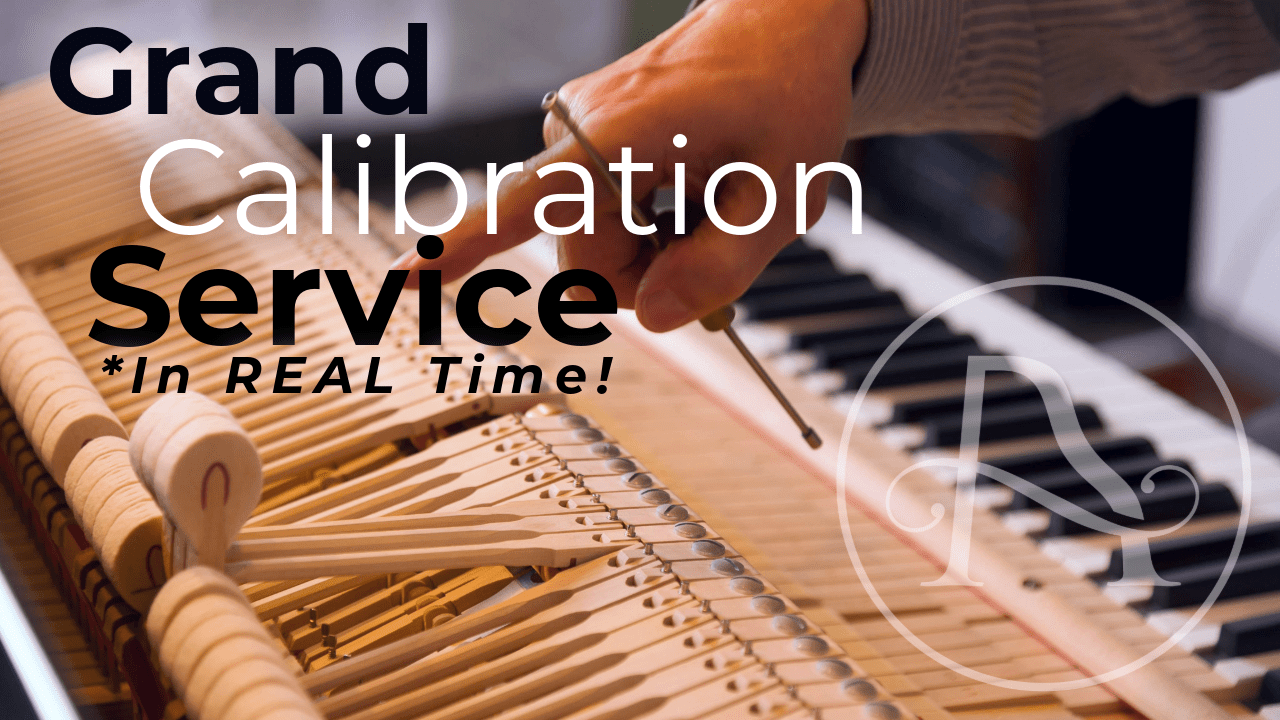Grand Calibration Service - In Real TIME!

When it comes to piano service, When it comes to enhancing a piano’s playability, few adjustments are as impactful as action calibration, especially on grand pianos. It’s one of those areas that can feel intimidating at first, but with the right tools and approach, it’s entirely manageable, even in the field. In fact, with just two tools and a structured method, you can deliver a calibration service that dramatically enhances the touch and responsiveness of a customer’s piano.
Essential Tools for Calibration
For most in-home action calibrations, I rely on just two tools:
Artisan 7-In-One Regulation Gauge - (available through Supply88) – Used to measure and standardize hammer blow distance.
- Capstan Wrench – Used to adjust both blow distance and let-off.
These two tools form the backbone of my basic grand calibration service. With them, I focus on just two core adjustments: hammer line calibration (blow distance) and let-off. These changes alone can elevate the piano’s performance and make a huge impression on the customer.
Start with Blow Distance
When I begin, I usually mark the first, last, and middle hammers using the blow distance gauge. Standard blow distance is 1-7/8", and most pianos I service are significantly off—either too high (causing excessive aftertouch) or too low (resulting in little to no aftertouch).
Here’s the basic process:
- Insert the gauge between the strings and hammers.
- Check the height of the hammer at your sample notes.
- Adjust the capstans for the first, last, and middle notes until the blow distance is correct.
- Calibrate the remaining hammers to match the samples, checking periodically from the player’s angle.
Pro tip: I do all of this in the piano—no table or lap needed. It reduces the risk of damage and speeds up the workflow.
Then Adjust Let-Off
Let-off is the next most important adjustment. Standard let-off is 1/8", and this is often visually adjusted by peering down through the action using a flashlight or capstan adjuster.
Tips for working efficiently:
- Use both hands—one to locate the dowel, the other to adjust.
- Practice adjusting by feel—your speed and accuracy will increase dramatically.
Let-off is one of those adjustments that will truly transform the playing experience, especially for customers sensitive to touch.
Optional: Backchecking and Drop
If time and scope allow, I’ll move on to:
- Backchecking – Ensures hammers are checking at a consistent distance from the strings. I use a 5/8" gauge and strike groups of three notes at once.
- Drop – Adjust how far the hammer falls after let-off using a drop screw regulator tool.
These refinements align the entire action and often surprise the customer with how much smoother and more responsive their piano feels.
Progress Takes Practice
For newer techs, don’t stress if this takes an hour or more. With practice, you’ll get your hammer line done in 15–20 minutes, and full calibration (blow distance, let-off, backcheck, and drop) in under an hour. But at first, set expectations accordingly and focus on quality over speed.
You might say:
“Mrs. Smith, today I’d love to focus just on recalibrating your hammer line. It’s going to take about an hour, but it’ll really improve the touch. Then, we can schedule another visit to take care of the other elements.”
Positioning Yourself as a Professional
This kind of work sets you apart. Most pianos have never had this level of attention, and most owners have never seen a technician do it. Offering calibration is more than a service—it’s a way to elevate what customers expect from piano care.
Whether it’s tuning plus a hammer line adjustment, or a full grand calibration with drop and backchecking, you’re not just fixing pianos—you’re delivering Pianocraft.
Want to sharpen your skills? Learn more through hands-on retreats and training at The Artisan School, where we go beyond theory and into real-world practice with mentorship and community.




